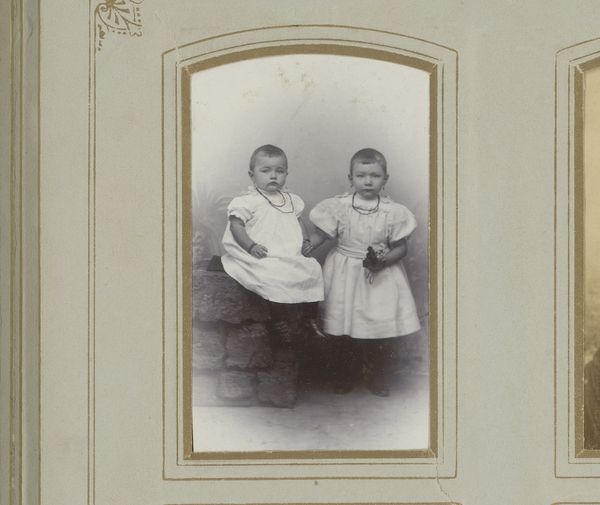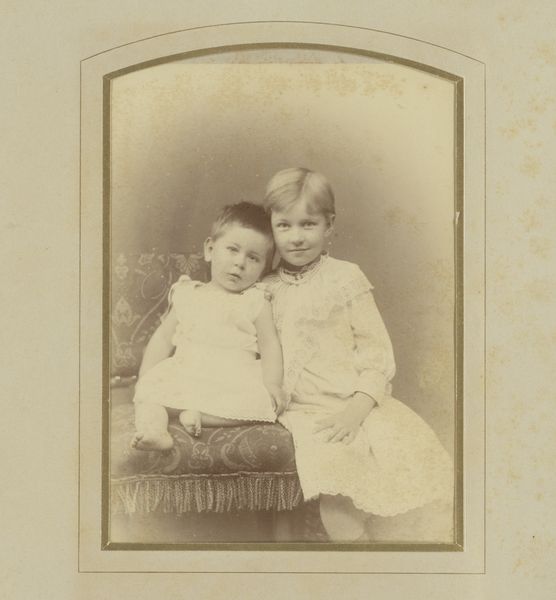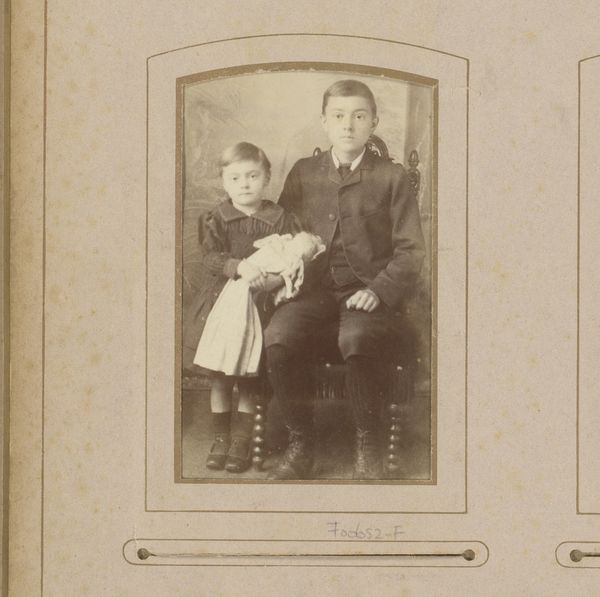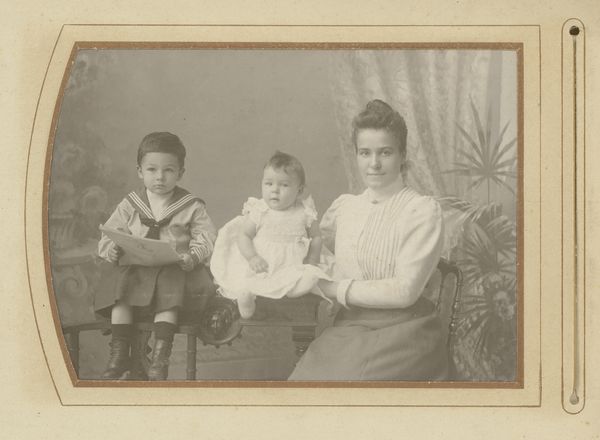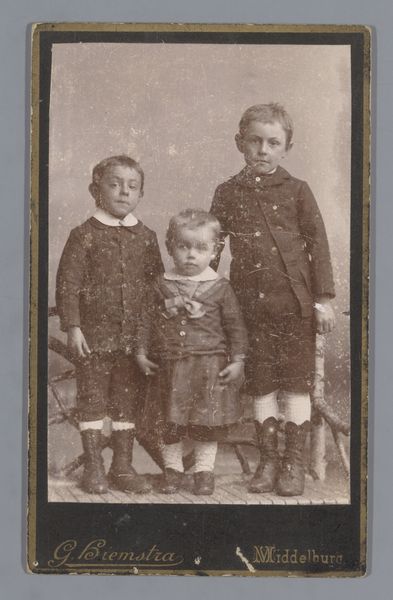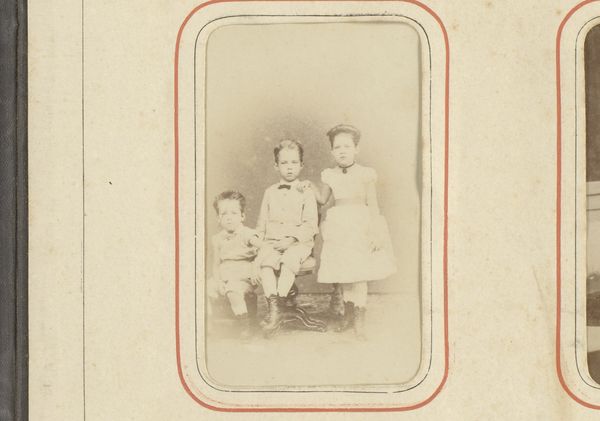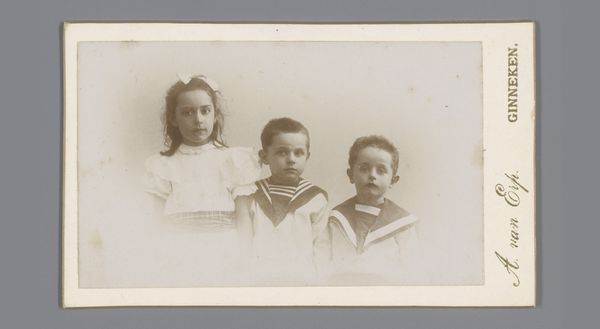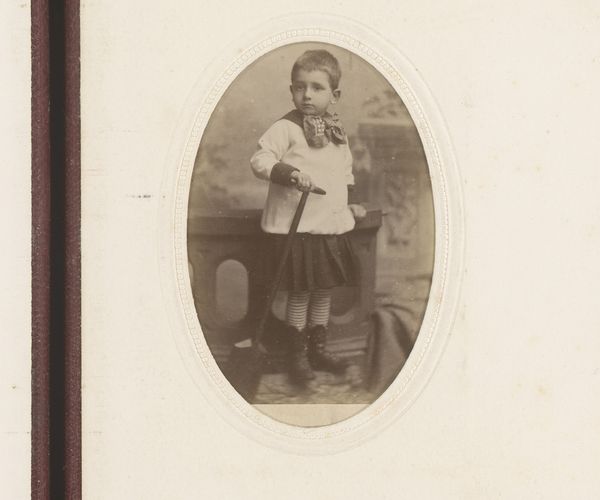
#
aged paper
#
vintage
#
photo restoration
#
parchment
#
archive photography
#
historical photography
#
old-timey
#
yellow element
#
19th century
#
golden font
Dimensions: height 85 mm, width 52 mm
Copyright: Rijks Museum: Open Domain
Curator: Immediately striking, isn't it? The image seems imbued with the weight of history. Editor: It feels muted, almost fossilized. There's a brownness that blankets the subjects. It reminds me how constructed these archival photos were and remain, like commodities fashioned by the rising middle classes to mark themselves. Curator: You're right to notice the muted tones and their aged materiality, but the expressions and costumes also offer glimpses into 19th-century childhood. We believe this work to be an anonymous portrait of three children from around 1893. Editor: I'm intrigued by the decision to stage this as a high art moment. Look at how the composition reinforces power structures. You’ve got a small child being elevated and put on display for viewers’ amusement while the other one, arguably slightly more aged, is already on a stepping stool. Curator: And those details surely spoke volumes to contemporary viewers. Note the meticulous details—the lace collars, the sturdy wool outfits, their placement on the luxurious fur rug. This conveys notions of respectability, tradition and perhaps hints about status that the family wished to preserve. Editor: I'm thinking about how class identity could be made legible through a series of constructed choices. Each one reveals this picture’s own processes of fabrication, production, and how consumption figured into its life as an image. Even those outfits weren't exactly something those kids themselves could create or even choose for themselves. Curator: Precisely! This photographic tradition creates its own cultural memory bank where people and things carry meanings through codified gestures and apparel. Look how we project our own nostalgia for what that might have represented! Editor: Ultimately, it’s about preserving a performance. We are only seeing how someone wished themselves to be represented, a self fashioned from consumer habits and aspirational goals, not simple people with complex, individual and inarticulable characters and identities. The question I am stuck on, who exactly would feel seen in this staging of privilege and class? Curator: An important question to ponder, and, viewed this way, the artwork transcends its age and speaks volumes about permanence and ephemerality, material culture and cultural memory! Editor: It becomes less a record and more a relic. And, while I still wince at how staged they all are, it has really provided an insight on materiality’s intersection with photographic media in its day!
Comments
No comments
Be the first to comment and join the conversation on the ultimate creative platform.

